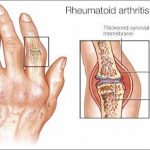Osteoporosis is a condition characterised by low bone mass, with a consequent increase in the bone fragility and therefore susceptibility to fracture.
The condition has now become a well-recognised public health problem. With the population becoming older the problems associated with bone fracture in the elderly are set to rise.
Bone
Bone is a living tissue which is constantly being broken down and reformed. Bone mass increases throughout childhood until peak bone mass is achieved, usually between the ages of 20 and 40. After the age of 40, in both men and women bone mass starts to decline. This loss accelerates in women for a duration of five years after menopause.
Dietary factors
Diet influences bone health. Important factors include calcium, vitamin D, vitamin K, other minerals, vitamins and protein. Body weight is important also, as overweight women tend to absorb calcium better and lose less bone than slim women, although obesity is not recommended as a preventive strategy for osteoporosis.
Exercise
Regular physical activity throughout life has been identified as one of the most important preventive measures against hip fracture. Weight bearing exercise, including aerobics, weight lifting, jogging, jumping and skipping seem to be the most beneficial on bone mass, both during growth and in later life. Walking and cycling have only a moderate effect and swimming no effect at all.
Reducing the risk of osteoporosis
- Realise the importance of exercise (especially weight bearing exercise, unless osteoporosis is established).
- Follow a varied, healthy diet, with adequate intake of calcium and vitamin D.
- Consider supplementation with calcium, particularly in adolescents and the elderly, if dietary intake appears to be inadequate.
- Avoid excessive salt intake.
- Avoid excessive alcohol consumption.
- Stop smoking.
Conclusion
Although nutrition is not the only factor, there is evidence that good diet has a positive influence on bone health. Calcium supplementation with vitamin D may help to prevent hip fracture in elderly people. Dietary sources of calcium include dairy products, bread, green vegetables, sardines and milk chocolate. Exercise along with a healthy lifestyle also reduces the risk of osteoporosis.
John Duffy MPSI—Claregalway Pharmacy (091 799754)


